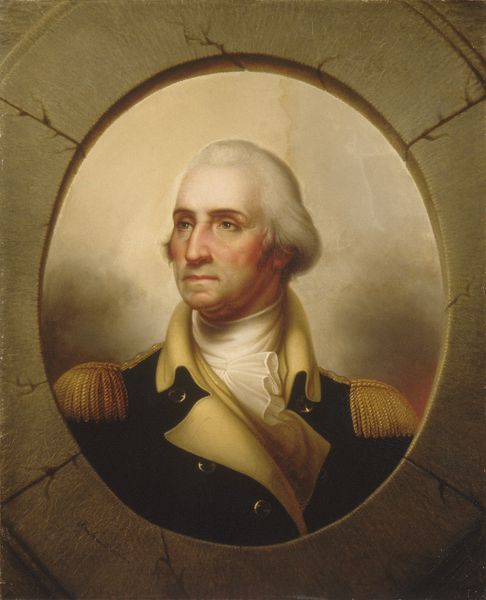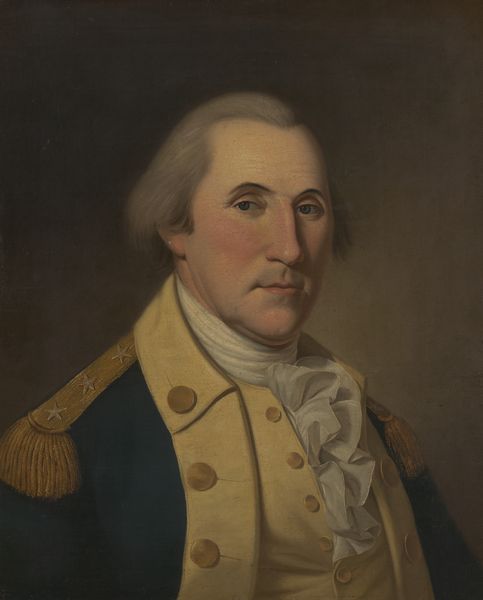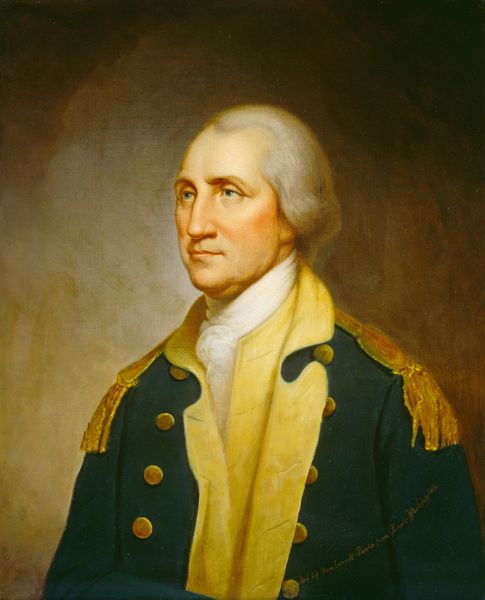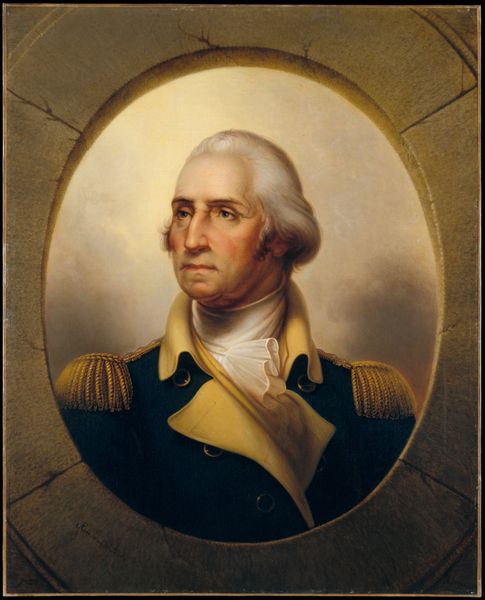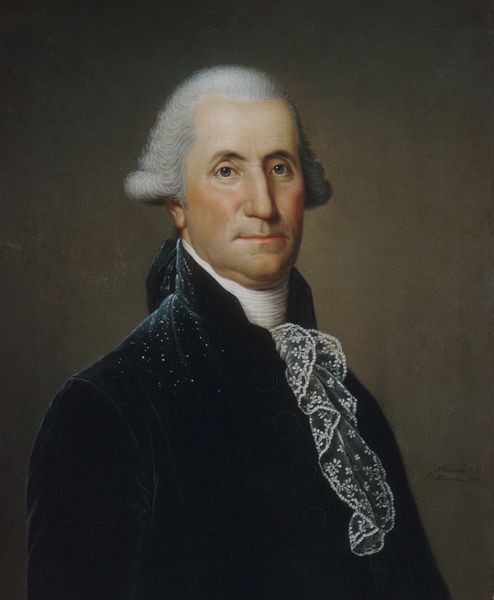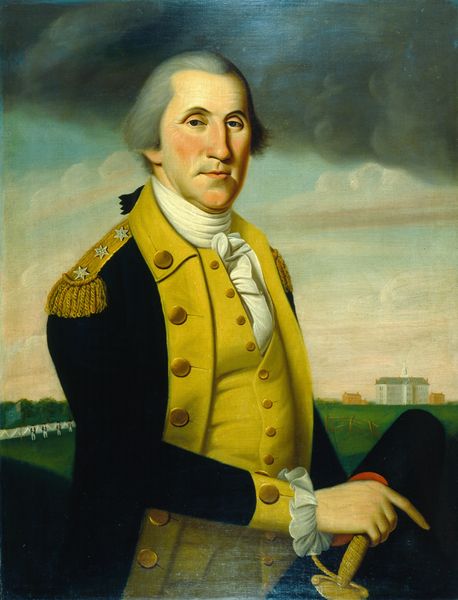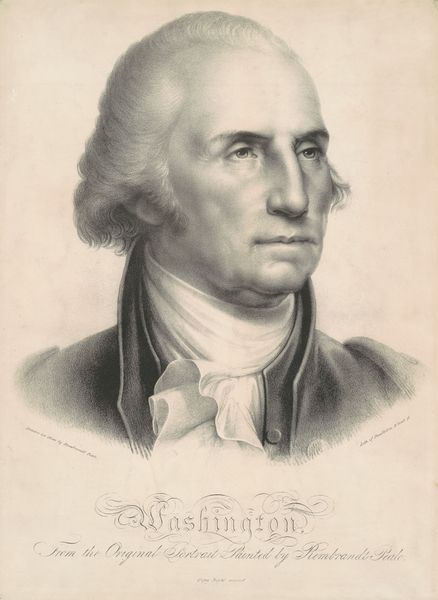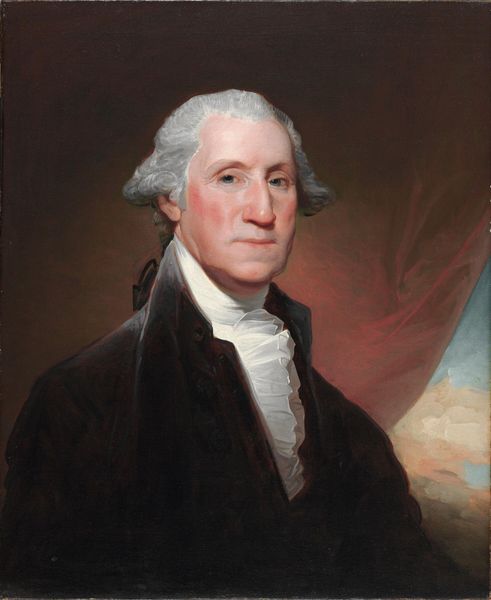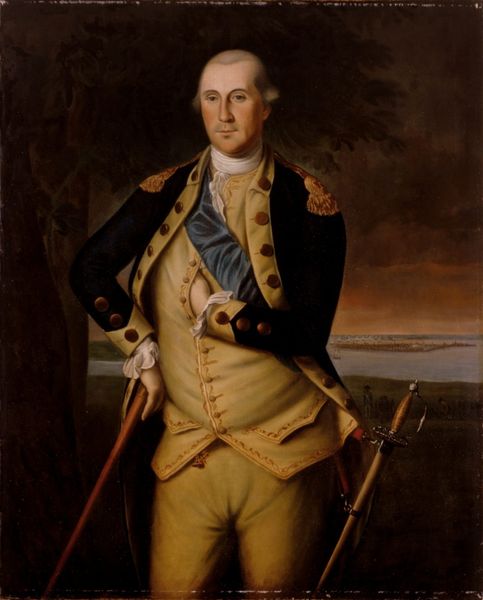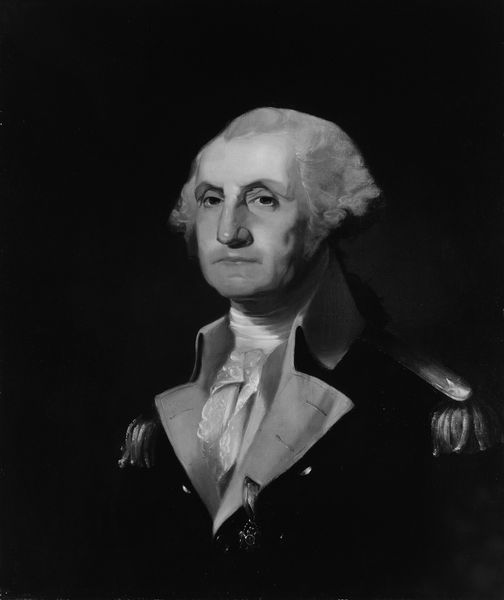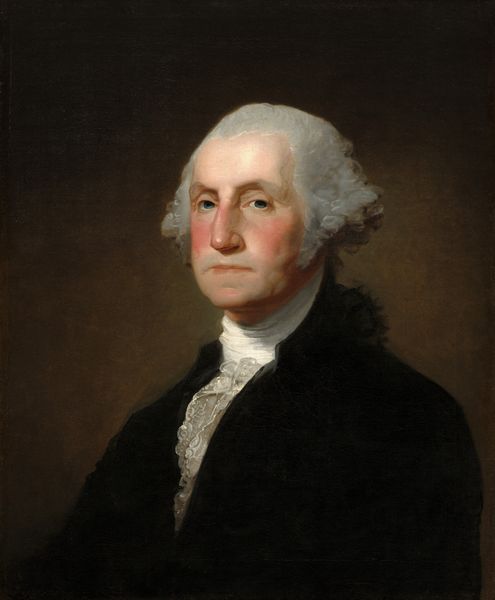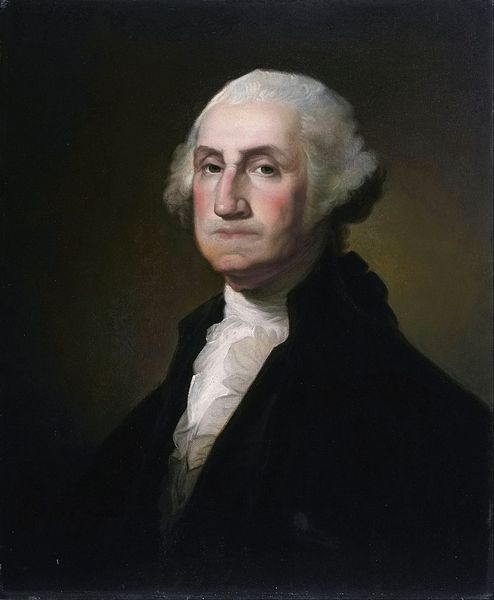
painting
#
portrait
#
neoclacissism
#
painting
#
history-painting
Dimensions: 21 3/4 x 17 7/8 in. (55.2 x 45.4 cm)
Copyright: Public Domain
This portrait of George Washington was painted by Charles Peale Polk with oil on canvas. Consider the qualities of oil paint itself: its capacity for blending, creating realistic skin tones and textures. Polk, nephew of the more famous Charles Willson Peale, would have learned to grind his own pigments, mixing them with linseed oil to achieve the desired consistency. This involved considerable manual labor, a far cry from the mass-produced paints available today. The use of canvas as a support is also significant. Canvas production was a growing industry in the late 18th century, reflecting the increasing demand for paintings among the burgeoning middle class. This portrait embodies the labor and skill involved in artistic production, from the cultivation of flax for the canvas to the meticulous brushwork of the artist. By focusing on materials, making, and context, we can appreciate the layers of meaning embedded in Polk's portrait, reminding us that art is always a product of its time and the labor that goes into it.
Comments
No comments
Be the first to comment and join the conversation on the ultimate creative platform.
